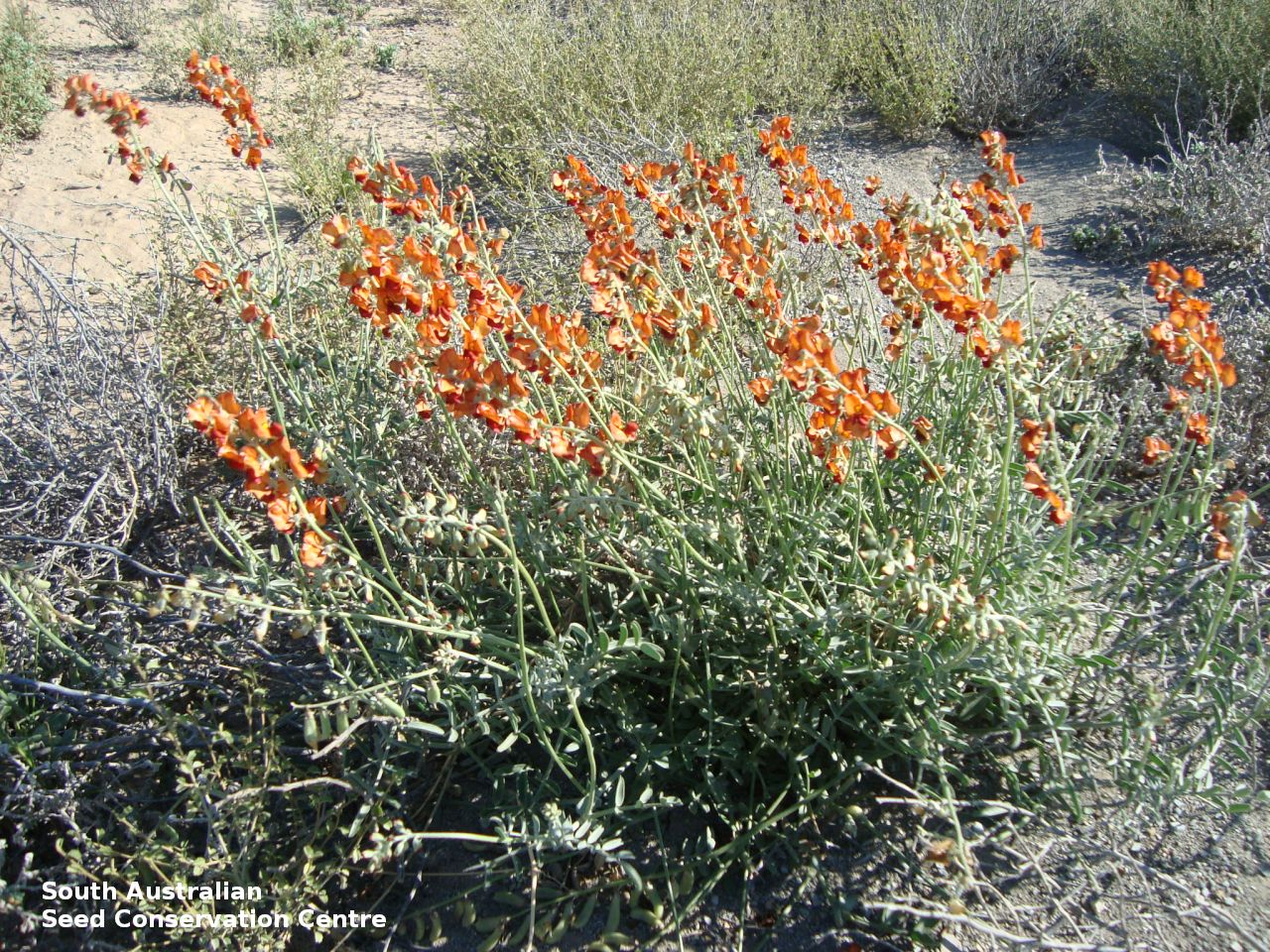
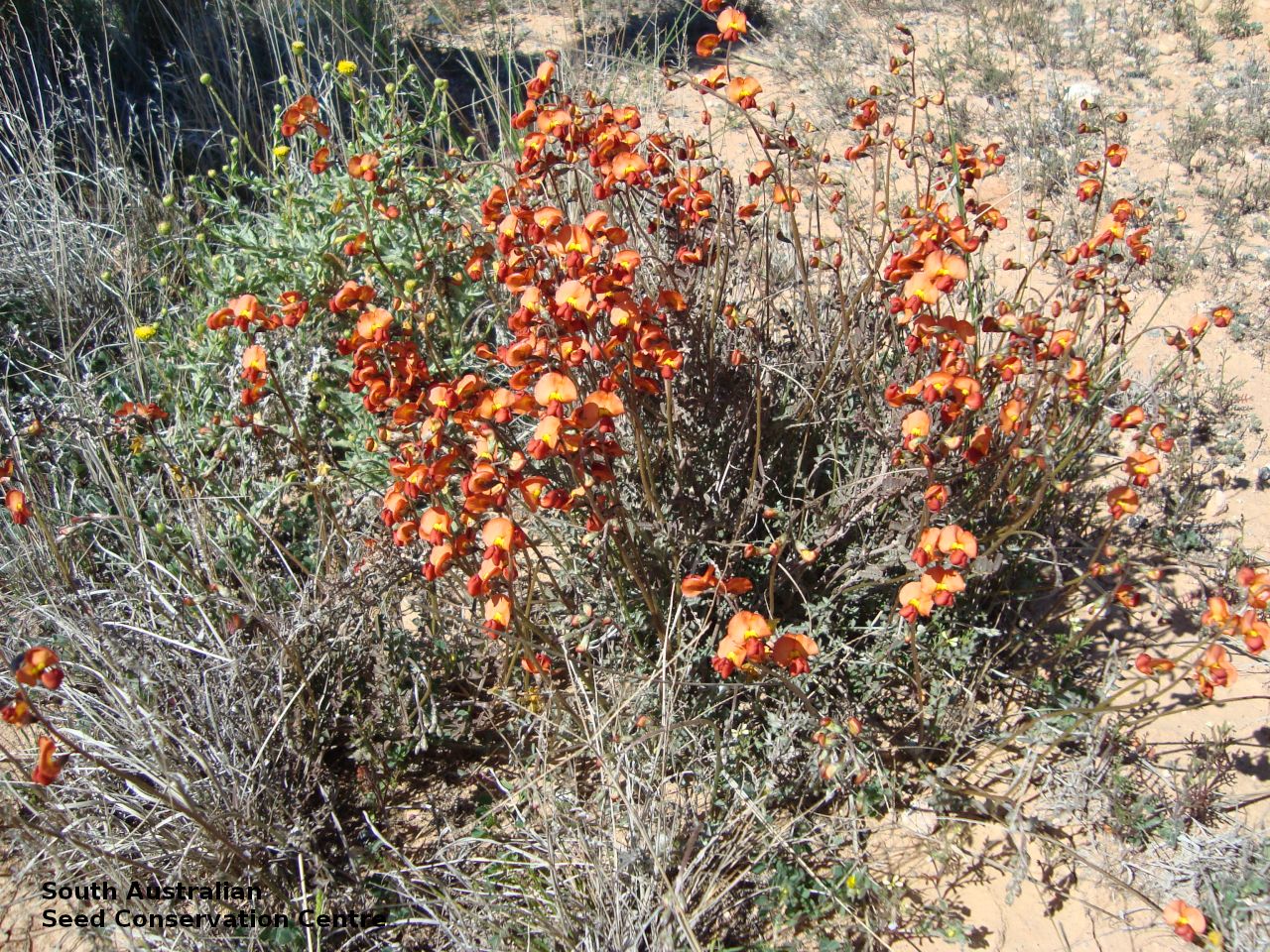
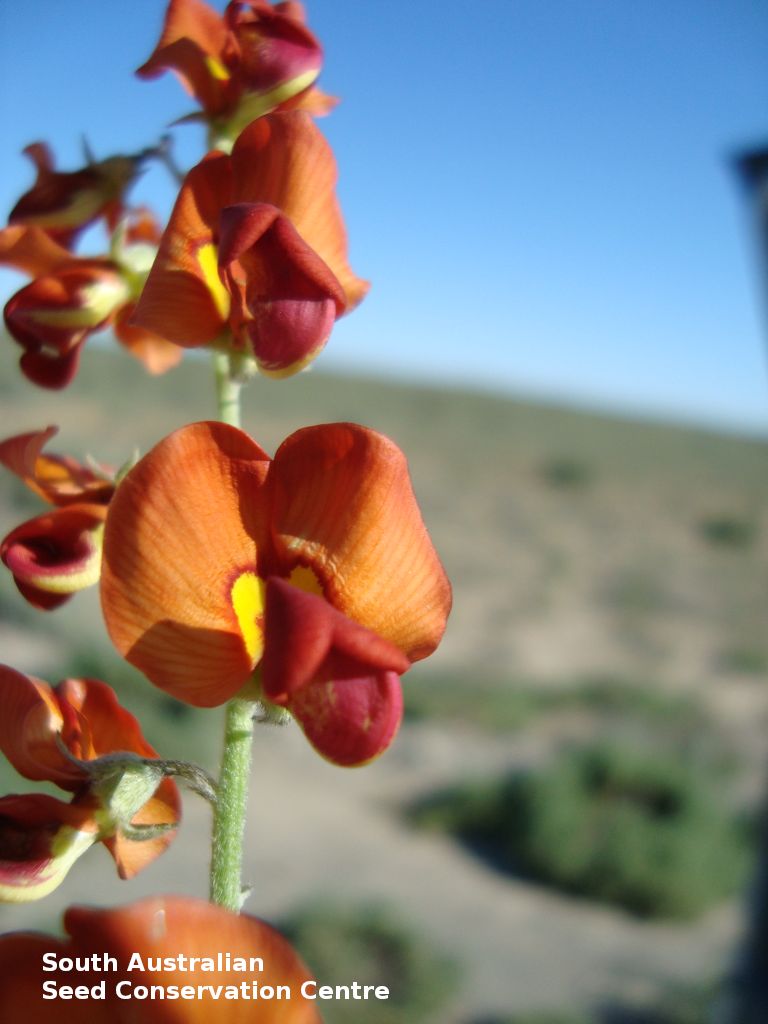
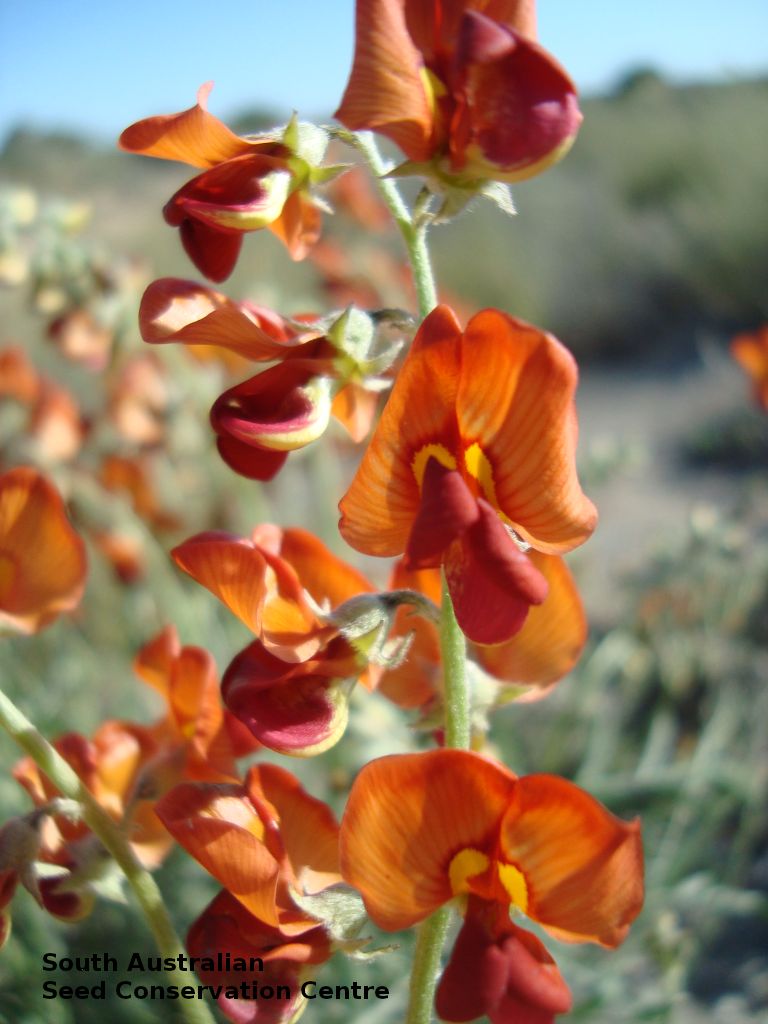
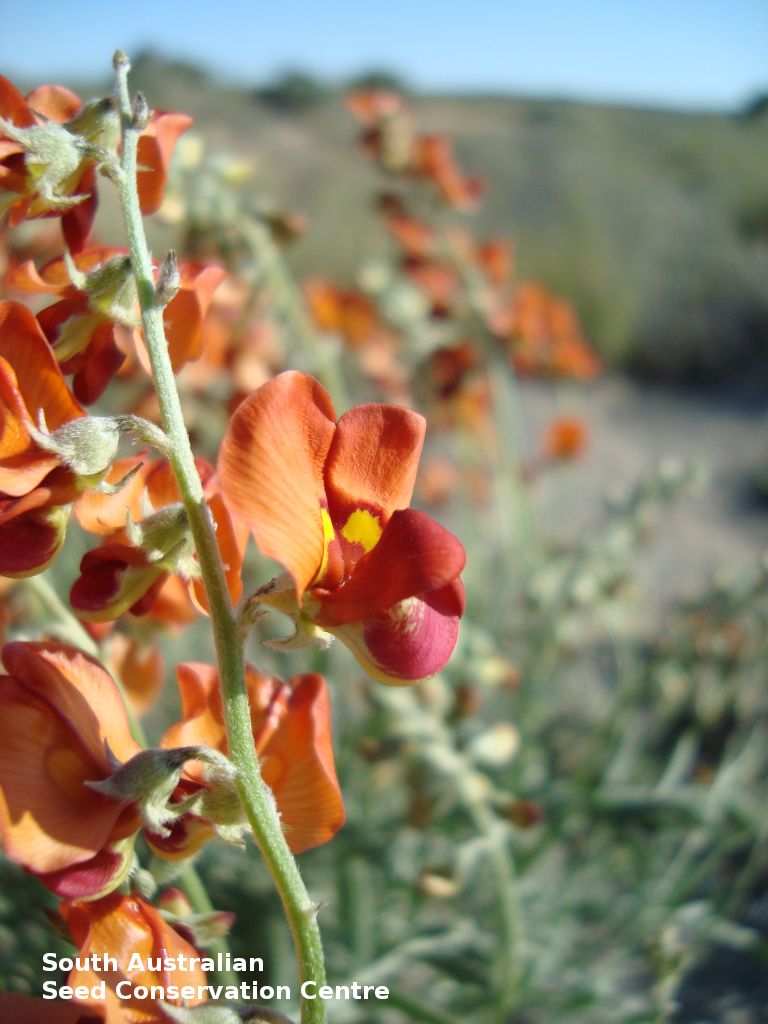
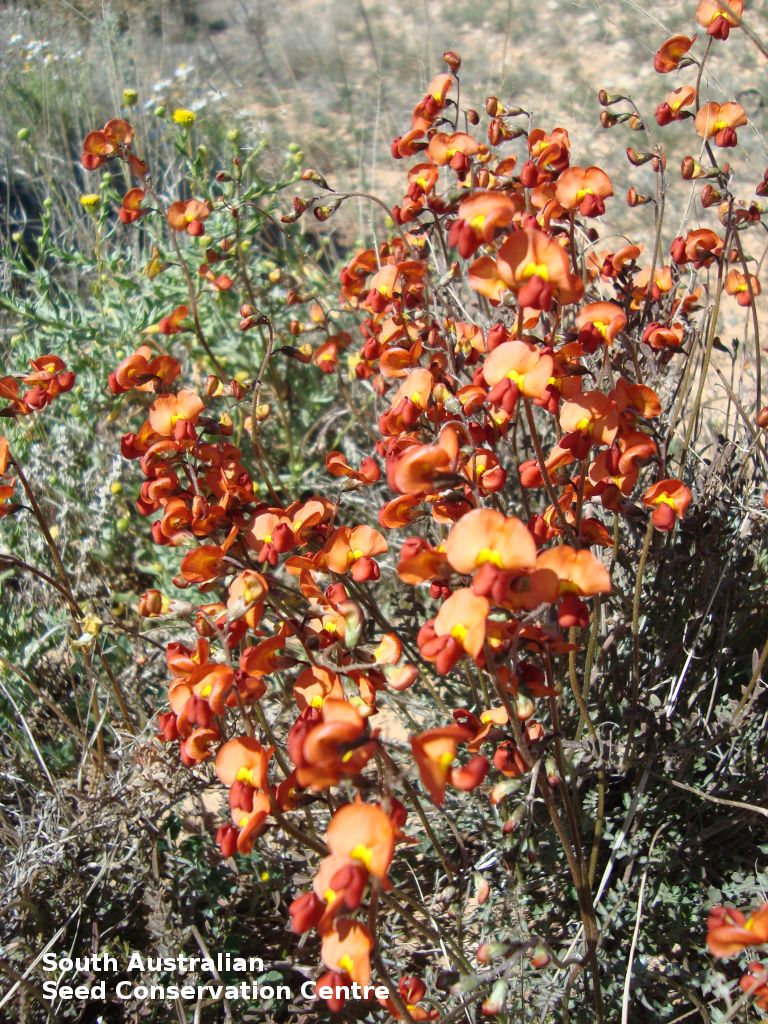
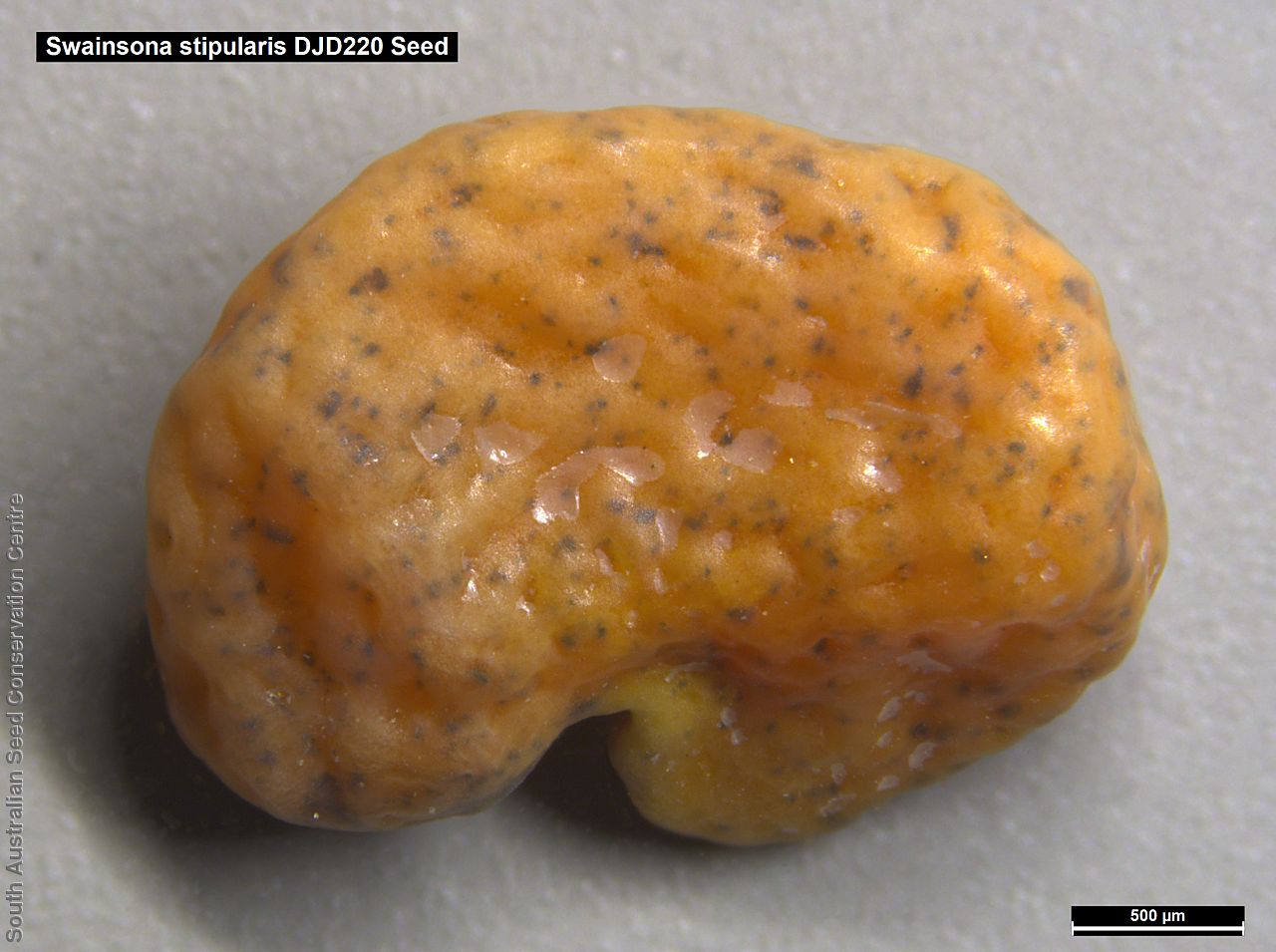
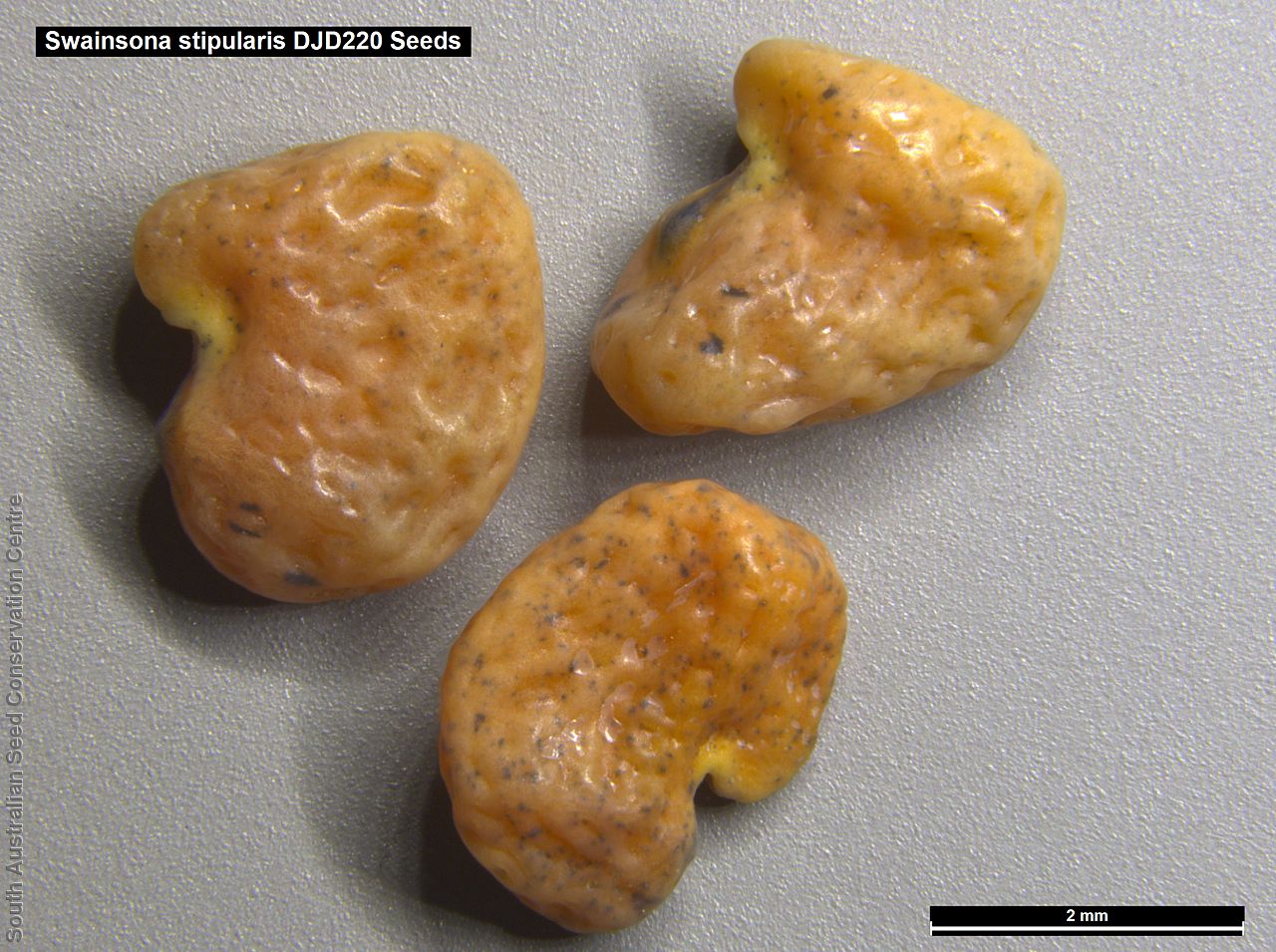

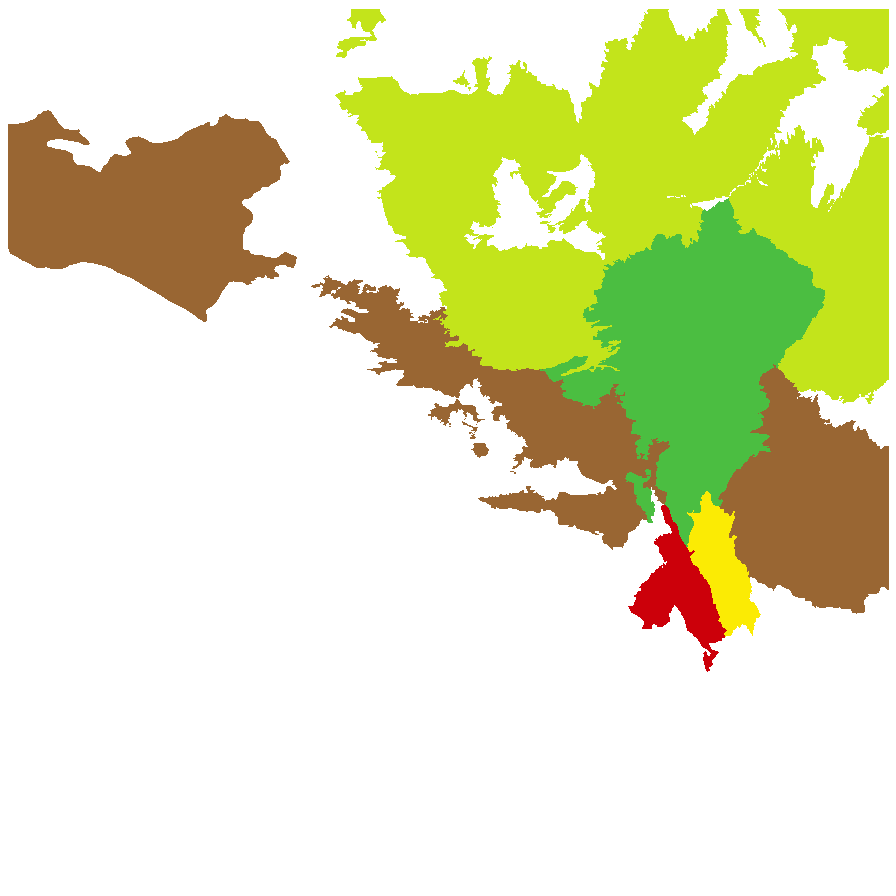
Botanical art
Prior names
Swainsona phacifolia, nom.illeg.
Swainsona phacifolia, nom.nud. & inval.
Swainsona stipularis var. geniculata, nom.inval.
Common names
Orange Darling-pea
Orange Swainson-pea
Orange Darling Pea
Etymology
Swainsona named after Isaac Swainson (1746-1812), an English scientist and horticulturalist who had a private botanic garden near London. Stipularis means having stipules, a basal appendage of a petiole.
Distribution and status
Found on the eastern side of South Australia north of Adelaide, growing on red sandy, stony or clay flats or slopes. Also found in Queensland and New South Wales. Native. Common in South Australia. Common in the other states.
Herbarium regions: Lake Eyre, Gairdner-Torrens, Flinders Ranges, Eastern, Eyre Peninsula, Northern Lofty, Murray, Southern Lofty
NRM regions: Adelaide and Mount Lofty Ranges, Northern and Yorke, South Australian Arid Lands, South Australian Murray-Darling Basin
AVH map: SA distribution map (external link)
Plant description
A spreading perennial herb with hairy, ascending stems arising from the top of a taproot. Leaves to 9 cm long with 5-11 hairy leaflets above a long petiole and broad stipules with orange-red flowers. Flowering between July and October. Fruits are long black pod to 30 mm long with a stiff leathery texture. Seeds are orange to brown, semi-flat reniform seed to 3.5 mm long with a wrinkled surface. Seed embryo type is bent.
Seed collection and propagation
Collect seeds between September and December. Collect mature pods, black with hard seeds inside. Mature pods can be found lying on the ground next to the plant containing hard seeds. When dried the pods can become hard and difficult to open. Use a rubber bung to rub the pods or break the pods open with your fingers to dislodge the seeds. Use a sieve to separate the unwanted material. Store the seeds with a desiccant such as dried silica beads or dry rice, in an air tight container in a cool and dry place. From two collection, the seed viability were high, ranging from 85% to 90%. This species has physical dormancy that needs to be overcome for the seed to germinate (e.g. nicking or softening the seed coat).
| Location | No. of seeds (weight grams) | Number of plants | Date collected | Collection number Collection location | Date stored | % Viability | Storage temperature |
|---|---|---|---|---|---|---|---|
| BGA MSB | 3,000 (14.4 g) 3,000 (14.4 g) | 50 | 23-Nov-2005 | DJD220 Flinders Ranges | 7-Aug-2006 | 90% | -18°C |
| BGA MSB | 6,300 (30.93 g) 2,600 (13.05 g) | 20+ | 24-Sep-2007 | DJD840 Lake Eyre | 19-Sep-2008 | 85% | -18°C |
| BGA | 580 (2.63 g) | 4-Nov-2015 | Hamley Bridge Northern Lofty | 28-Jun-2021 | 70% | -18°C |
Number of plants: This is the number of plants from which the seeds were collected.
Collection location: The Herbarium of South Australia's region name.
% Viability: Percentage of filled healthy seeds determined by a cut test or x-ray.